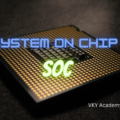Subscribe to Our Channel : https://www.youtube.com/@VKYAcademyPlus?sub_confirmation=1
Facebook :https://www.facebook.com/conceptROS/follow
LinkedIn :https://www.linkedin.com/company/14687116/
| Signals and Systems | ||
| SL NO. | Topic Name WIth Description | Click Here to Watch |
| 1 | Introduction to Signals | Classifications | Examples | Signals, and Systems | Click Here |
| 2 | Continuous-Time Signal vs Discrete-Time Signal | Analog vs Digital | Signals, and Systems | Click Here |
| 3 | Representation of a Discrete-Time Signal | Sequence, Functional, Graphical, Tabular Representation | Click Here |
| 4 | Operations on Discrete Time Signal | Addition Operation | Multiplication | Amplitude Scaling | Click Here |
| 5 | Operations on Discrete Time Signal | Time Shifting | Time Advance | x(n+k) | Time Delay | x(n-k) | Click Here |
| 6 | Operations on Discrete-Time Signal | Time Scaling| Up Sampling | Down Sampling | Decimation | x(kn) | Click Here |
| 7 | Operations on Discrete Time Signal | Folding |Time Reversal| Folding + Shifting | x(-n-k) | x(-n+k) | Click Here |
| 8 | Deterministic and non-deterministic Signal | Classifications of Discrete-time Signals | Click Here |
| 9 | Causal Signal, Non-Causal Signal, and Anti-Causal Signal | Classifications of Discrete-Time Signals | Click Here |
| 10 | Symmetric (Even) and Antisymmetric (Odd) Signal | Classifications of Discrete-Time Signals | Click Here |
| 11 | Energy Signal and Power Signal | Classifications of Discrete-Time Signals | Signals, and Systems | Click Here |
| 12 | Numerical1 | Check (1/2)^n u(n) Energy or Power Signal | Classifications of Discrete-Time Signals | Click Here |
| 13 | Numerical2 | Check δ [n] is Energy Signal or Power Signal | Unit Impulse Signal is Energy or Power | Click Here |
| 14 | Numerical3 | Check e^(j πn/2) is Energy Signal or Power Signal | Complex Exponential Signal | Click Here |
| 15 | Numerical 4 | Check sin(πn/4) is Energy Signal or Power Signal | Trigonometric Function | Click Here |
| 16 | Numerical 5 | Check cos(πn/4) is Energy Signal or Power Signal | Trigonometric Function | Click Here |
| 17 | Numerical 6| Check u [n] is Energy Signal or Power Signal | Unit Step Signal is Energy or Power | Click Here |
| 18 | Numerical-7 | Energy signals and Power Signals | Constant x(n) = K is Energy Signal or Power Signal | Click Here |
| 19 | Numericals(8,9) | Neither Energy nor Power Signals (NENP Signals) | Signals and Systems | DTS | Click Here |
| 20 | Numerical 10 | Energy Signals and Power Signals | Ramp Signal is Neither Energy Nor Power Signal (NENP) | Click Here |
| 21 | Periodic and Aperiodic Signals | Discrete-Time Periodic Signal | Periodicity | Click Here |
| 22 | Numerical-1 | Periodic and Aperiodic Signals | Discrete-Time Periodic Signal | Fundamental Period | Click Here |
| 23 | Numerical-2,3 | Periodic and Aperiodic Signals | Discrete-Time Periodic Signal | Fundamental Period | Click Here |
| 24 | Numerical-4,5 | Periodic and Aperiodic Signals | Discrete-Time Periodic Signal | Fundamental Period | Click Here |
| 25 | Numerical-6 | Periodic and Aperiodic Signals | Discrete-Time Periodic Signal | Fundamental Period | Click Here |
| 26 | Numerical-7,8 | Periodic and Aperiodic Signals | Discrete-Time Periodic Signal | Fundamental Period | Click Here |
| 27 | Linear and Non linear Systems | Classifications of Discrete Time Systems | y(n) = x^2(n) | Click Here |
| 28 | Time-Variant (TV) and Time-Invariant Systems(TIV) | Classifications of Discrete-Time Systems | Click Here |
| 29 | Static and Dynamic Systems | Classifications of Discrete-Time Systems | Memoryless and with memory | Click Here |
| 30 | causal and Non Causal Systems final | Classifications of Discrete-Time Systems | Signals and Systems | Click Here |
| Z TRANSFORM AND ITS PROPERTIES | ||
| 1 | Introduction to the Z transform | Introduction to the Z Transform | Signals and Systems | Digital Signal Processing | Click Here |
| 2 | Determine the Z Transform and ROC of x(n) = a^nu(n) | Z Transform and ROC of Infinite duration (Causal) Sequence | Click Here |
| 3 | Determine the Z Transform and ROC of (-b)^n u(-n-1) Z Transform and ROC of Infinite Duration (Non-Causal) Sequence | Click Here |
| 4 | Properties of Region of Convergence | ROC properties: Z Transform | Signals and Systems | Digital Signal Processing | Click Here |
| 5 | Lecture-8: causality and stability in Z Transform using ROC | Click Here |
| 6 | Lecture-9: Z Transform Properties a brief introduction | Click Here |
| 7 | Lecture-10: Linearity Property of Z Transform Proof with Numerical | Signals and Systems | Digital Signal Processing | Click Here |
| 8 | Lecture-11: Shifting Property of Z Transform Proof with numerical | Z Transform Properties | Click Here |
| 9 | Lecture-12: Time Reversal Property of Z transform Proof with Numerical | Z Transform Properties | Click Here |
| 10 | Lecture-13: Scaling Property of Multiplication with exponential Property – Z Transform Properties | Click Here |
| 11 | Lecture-14: Convolution Property of Z Transform Proof with Numerical | Z Transform Properties | Click Here |
| 12 | Lecture-15.1: Differentiation property of Z transform with proof | Z Transform Properties | Click Here |
| 13 | Lecture -15.2 : Differentiation Property Numerical x(n) = n.a^n.u(n) | Z Transform Properties | Click Here |
| 14 | Lecture – 16: Complex Convolution Theorem of Multiplication Property of Z Transform | Z Transform Properties | Click Here |
| 15 | Lecture – 18 Parseval’s theorem of Z Transform with proof | Z Transform Properties | Click Here |
| 16 | Lecture -19: One-sided z transform[Unilateral z Transform] Unilateral vs. Bilateral z transform | Click Here |
| 17 | Lecture – 20: 1/4 Shifting Property Proof of One-Sided Z Transform | Click Here |
| 18 | Lecture -21: System function H(z) and Unit sample response h(n) of a difference equation | Click Here |
| 19 | Lecture-22: Rational function in z transform [Inverse z transform using partial Fraction Method] | Click Here |
| 20 | Lecture -23: Numerical – Inverse z transform using partial fraction expansion method | Click Here |
| 21 | Lecture-24: Inverse Z Transform using Long Division Method | Power Series Method | Click Here |










